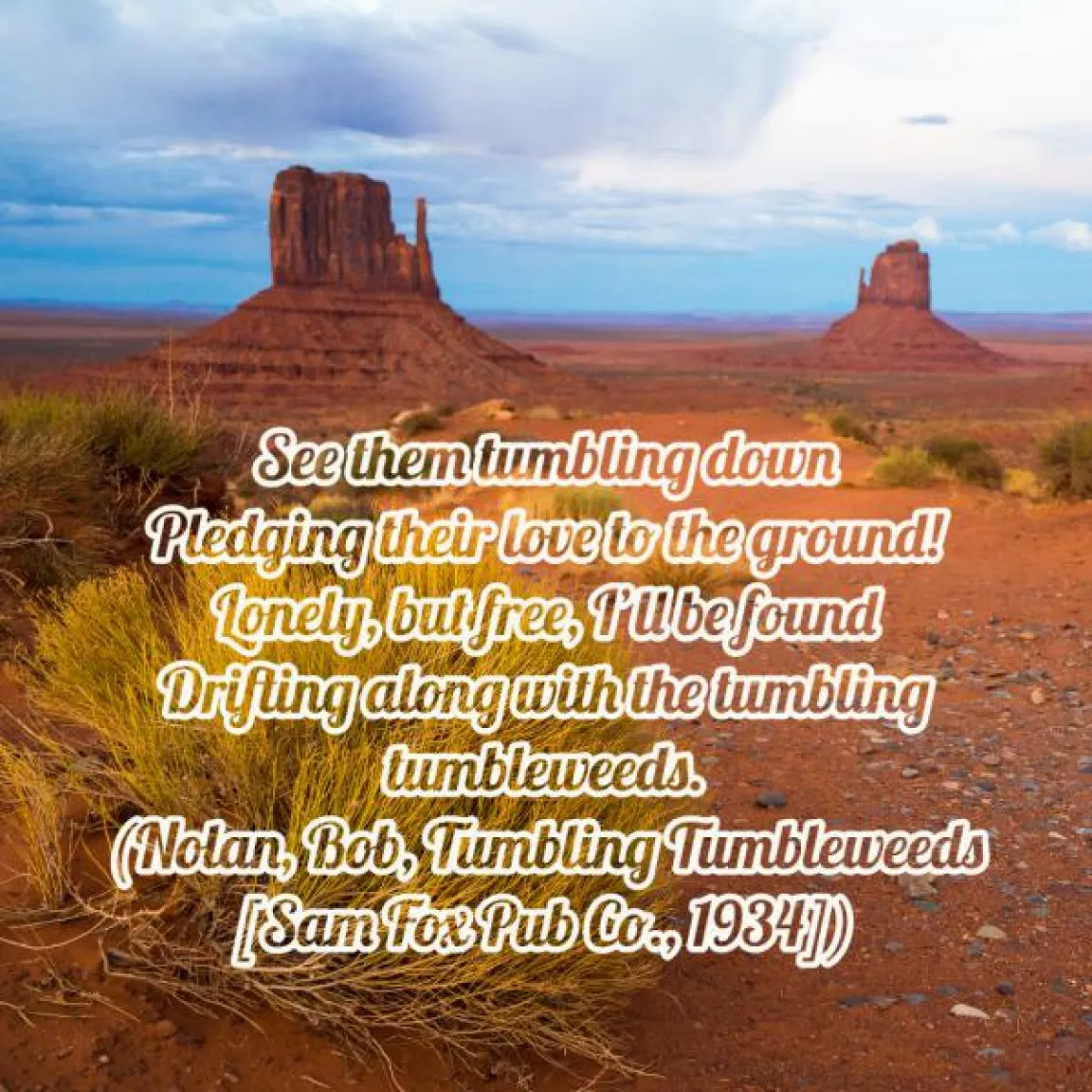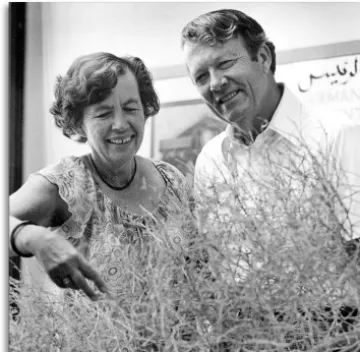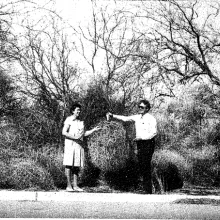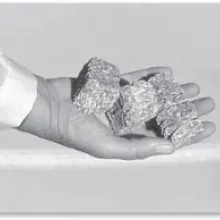Historical Lens: Tumbling Tumbleweeds

In general, it is only in romantic Western songs that tumbleweeds are mentioned without being maligned. This invasive weed, also known as Russian thistle, is not only an agricultural nuisance, but can be a serious fire intensifier—as evidenced in the recent wildfires in the Catalina Mountains north of Tucson. But, in the late 1970s, OSC Founder, Aden Meinel, and his wife and research partner, Marjorie, took advantage of a drive to Phoenix to formulate an idea to raise tumbleweeds as an energy crop—the production of a burnable biomass that could be raised and then processed as a fuel source.
Marjorie: Honey, remember that picture in the ‘Daily Citizen’—the one in color showing the controlled burning of tumbleweeds in Avra Valley?
Aden: That was a spectacular picture. I think I’m thinking what you’re thinking.
Marjorie: Okay, tell me.
Aden: Tumbleweeds carry a lot of energy. Yes? So why burn them like that.
Marjorie: Exactly. Just look out there. We’ve been passing vast fields of the awful things. Why not harvest them for biomass?(Aden and Marjorie Meinel, “The Solar Odyssey, Adventures along the Way,” p. 203)

Unconventional as it might sound, the choice of tumbleweeds for a cash crop was logical, as they have the highest rate of conversion of water into cellulose of any plant known—giving them the ability to thrive in areas where it would be impossible to grow food crops. Additionally, with an estimated 20 percent of Arizona’s 1.3 million acres of agricultural land being ‘retired from use’ at the time due to water concerns, Aden and Marjorie thought the project’s most important impact could have been an economic one. The hope was that tumbleweed ranches could put some of that land back in business.
Once the seed of the idea to use tumbleweeds constructively was planted, the Meinels headed to the University of Arizona Library to read as much as they could find. Unfortunately, they discovered quickly that very little was known about this plant—botanical and scientific studies had generally been for the purpose of learning how to get rid of it rather than get to know it better.
Aden and Marjorie’s first tasks were to determine the energy content per kilo of dried tumbleweed and then their value per hectare of land. Finding no written data, they did what any great researchers would do—collected samples and analyzed them at the University. After weighing dried tumbleweeds and estimating their optical cross section, the Meinels calculated that a hectare (2.47 acres) of land could produce 28 metric tons of dry tumbleweed. Additional thermal energy calculations, estimated the net harvested value of dried tumbleweed would be $500 per hectare—which compared favorably with the average yield per hectare of other crops grown in the United States in the 1970s, including $254 for cotton, $652 for peanuts, and $1,042 for wheat.
The Meinel’s next hurdle in the tumbleweed challenge was to figure out how to harvest the dried tumbleweed—reducing it to a form suitable for transport, storage and combustion. On their next trip to Phoenix, they saw some promising farm equipment in use in a field of alfalfa. Alfalfa was being harvested by a machine that not only harvested the field-dried cuttings, but also compressed them into cubes about 3 inches on each side to be fed directly to cattle at feed lots. “Why not take the same machine and do likewise with tumbleweeds?”

In Sept. 1978, the Arizona Solar Research Corporation awarded Aden and Marjorie a contract for the ‘Assessment of Biomass Potential of Arizona Weeds’ and, in June of the following year, they received a $50,000 grant from the Department of Energy to study the ‘Fuel Possibilities of Tumbleweeds.’ Under the grant—administered in conjunction with UA’s Office of Arid Lands— the Meinels demonstrated methods of planting, growing, harvesting, and compacting or otherwise converting the dried plant to a usable form.
The tumbleweed cubes produced were fun to burn, but the commercial market seemed slim. Then, their colleagues in the Arid Lands program struck upon the idea of ‘fireplace logs.’ Again, machinery already existed to make fireplace logs out of sawdust and wood chips. “Why not feed tumbleweed cubes from the fields into such a log-maker?” A competition was held at the University to select a name for these logs, and the natural name soon became the almost unanimous choice of those polled: TUMBLELOGS.

Early Fall 1979, Arid Lands harvested eight tons of tumbleweed from six acres of city-owned land in the Avra Valley. The dried tumbleweeds were sent to Presto Log Company in Flagstaff, and 100 Tumblelogs were produced. Resembling artificial logs manufactured from compressed wood chips, the first Tumblelogs made their public debut on Dec. 21, 1979 at UA’s Slonaker Alumni Building. Considered useful for either heating or cooking, Tumblelogs gave a glimmer of being a hot item in Arizona’s energy future. Burning slowly and sedately— with no crackling or popping and only a relatively small amount of smoke—a five-pound log usually lasted more than two hours and gave off about the same amount of heat energy as burning wood.
Unfortunately, after the second production run of Tumblelogs, a problem was noted—a rather offensive odor was detected as the logs burned. Delving into it, the Meinels discovered that the team at Presto Log Company needed to add some green tumbleweeds into the mix to improve the compaction and adhesion of the dry material. It was the green tumbleweeds that gave the burning Tumblelog this awful pungency. Before some other form of biomass was discovered to perform the role of adhesive, interest in Tumblelogs diminished—along with grant money—and the project gradually died away.

Tammy’s Fun Tumbleweed Note: While you may not be able to enjoy the warmth from Tumblelogs burning in your fireplace this winter, you can still celebrate this whimsical plant at the annual Chandler Parade of Lights and the Tumbleweed Tree Lighting. Several years ago, I joined hundreds of Arizonians to watch parade floats featuring imaginative tumbleweed characters and the lighting of one of the most unique Christmas trees I had ever seen!
